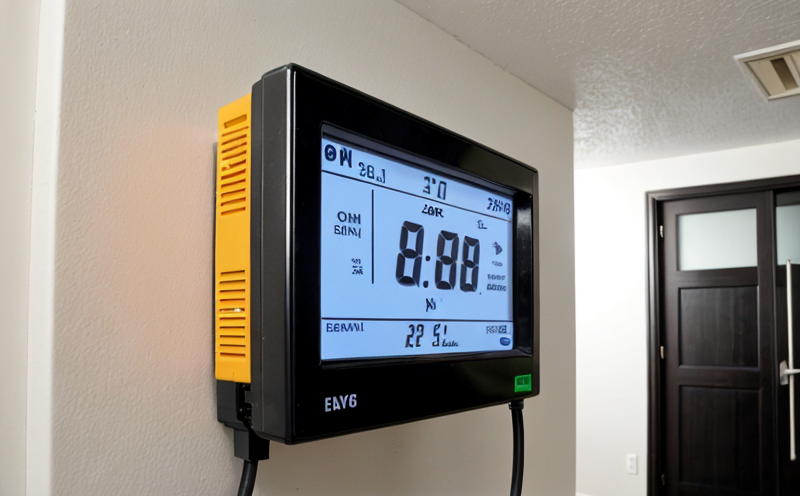ISO 9869 Thermal Insulation Testing of Building Elements
The ISO 9869 standard provides a comprehensive framework for testing thermal insulation properties in building elements. This service ensures compliance with international standards, thereby enhancing the energy efficiency and sustainability of buildings.
Thermal insulation is crucial in reducing heat loss or gain through walls, roofs, floors, and other building components. ISO 9869 specifies procedures for determining the thermal resistance (R-value) and related parameters such as the thermal transmittance coefficient (U-factor) of building elements.
The testing procedure involves the use of a guarded hot box apparatus, which measures heat flow through an insulated sample placed in a controlled environment. The sample is typically a 50 cm x 50 cm square or rectangular section of the insulation material to be tested. This method allows for accurate determination of thermal performance under laboratory conditions.
Specimen preparation is critical and involves cutting representative sections from the full-scale product, ensuring that they are free from defects such as voids, cracks, or irregularities in thickness. The test samples must also be conditioned to a standard temperature and humidity level before testing begins.
The guarded hot box apparatus operates within a controlled environment where the heat flux is measured using calibrated thermocouples or similar devices. The system ensures that any additional heat loss due to conduction through the surrounding materials is negligible, thus providing accurate measurements of thermal resistance.
Once testing is complete, detailed reports are generated summarizing all relevant data points including initial conditions, test results, and compliance with specified standards. These reports serve as valuable tools for quality assurance programs and help ensure that building elements meet required insulation performance levels.
The importance of this service cannot be overstated given the growing emphasis on sustainable construction practices worldwide. By adhering to ISO 9869 guidelines during design, procurement, installation, and maintenance phases, stakeholders can significantly improve overall energy efficiency while minimizing environmental impact.
| Building Element Type | Description | Purpose of Testing |
|---|---|---|
| Roof Insulation Panels | Materials used to insulate the roof surface. | To ensure that roofs provide adequate thermal resistance against heat loss. |
| Floor Slabs | Concrete or composite slabs forming part of the floor structure. | To prevent upward heat transfer from basements to upper floors. |
| Wall Panels | Insulating panels used for exterior walls. | To enhance thermal comfort and reduce heating costs. |
Benefits
- Achieve regulatory compliance with ISO 9869 standards.
- Enhance the energy efficiency of buildings by ensuring proper insulation performance.
- Reduce operational costs associated with heating and cooling systems.
- Promote sustainable building practices that contribute to a greener environment.
Quality and Reliability Assurance
- The use of calibrated instruments ensures precise measurement of thermal properties.
- Standardized testing procedures minimize variability between tests, enhancing reliability.
- Detailed documentation supports traceability throughout the testing process.





